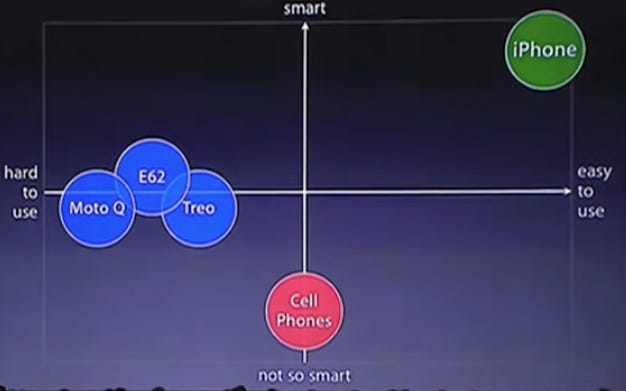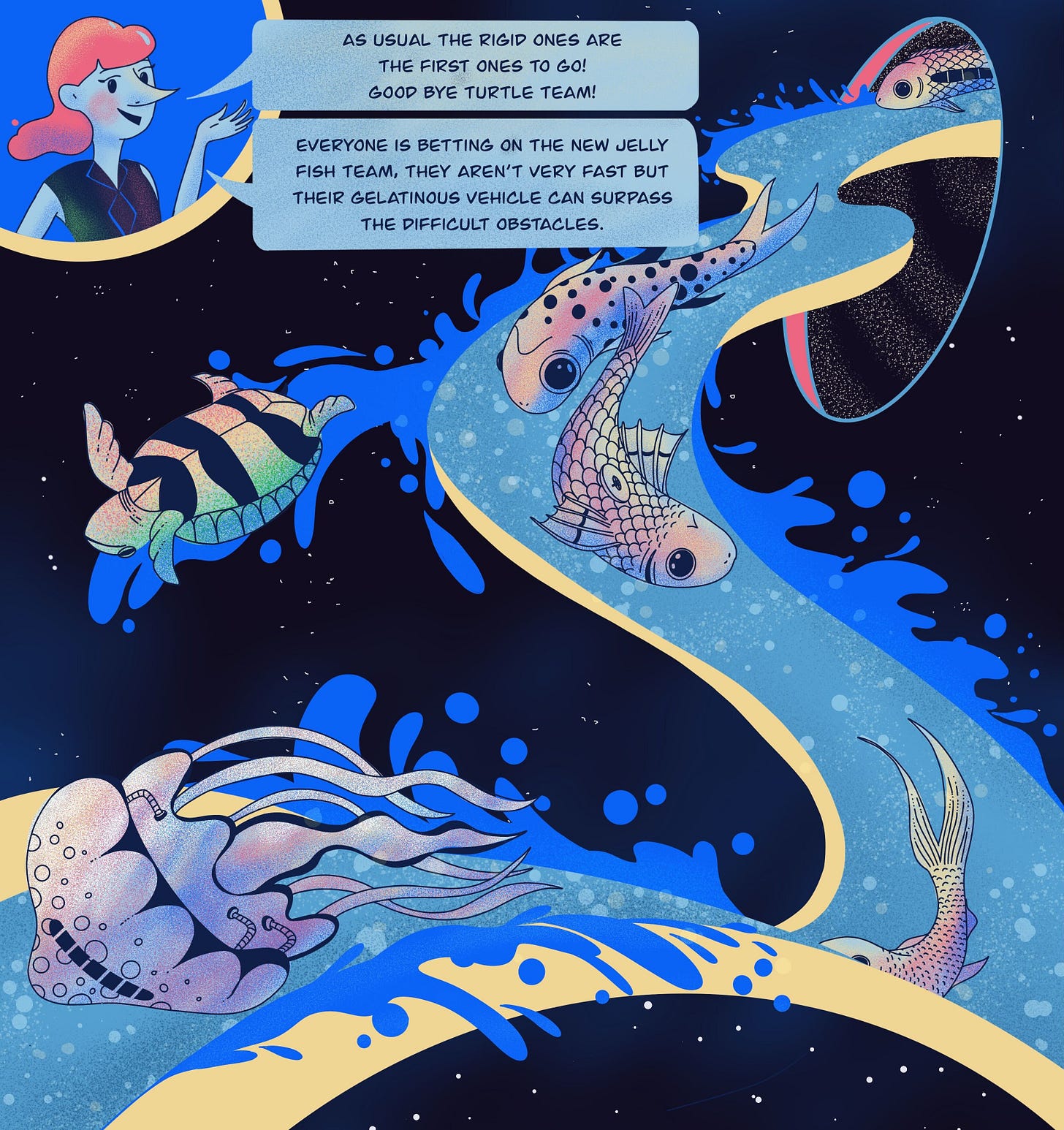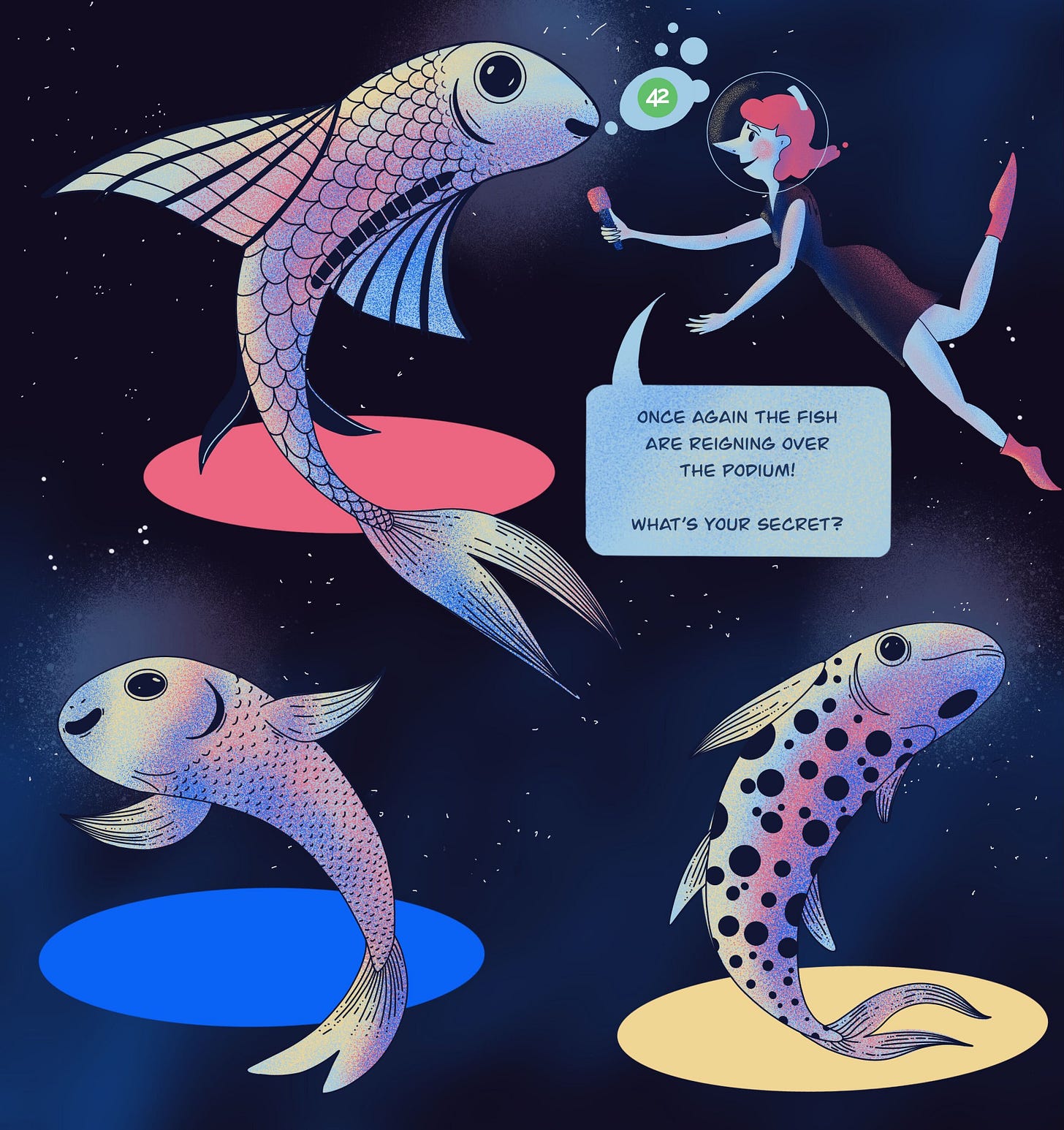Editors Note: What does Revenue Intelligence mean? If you are Marketing Sales savvy you’ll recognize that’s Gong’s ‘category’. But really what does it mean? At its core to oversimplify Gong records sales calls. Sure they have additional stuff on top like analytics and analysis but the core function is recording.
I go back to something Evan Willians (Twitter/Medium) said & I am paraphrasing from memory but the internet helps scale human desires & behaviours. In the view I think there’s no new ‘categories’ or ‘blue oceans’ but core business needs that are served in different ways (save time / money or both). If you have read some of my previous writings you won’t be surprised to hear that I am not a fan of ‘lets create a new category’ GTM. You end up spending too much time trying to frame your solution as a ‘new thing’ creating cognitive load. Its easier to reference your solution to an existing one or position it as a subset of an existing market.
I want to give a shoutout to Janessa at dot. She’s hiring for field marketing & what she’s building at dbt is something special. Check out the role & other open roles here.
"Happy families are all alike; every unhappy family is unhappy in its own way."
Leo Tolstoy
"All happy companies are different; every unhappy company is doing the same as other unhappy companies."
Peter Thiel
True innovation, which allows us to create new frameworks when we think about products, is more scarce than we imagine. Chances are you have already seen the keynote presentation of the iPhone, a truly innovative, disruptive device that shaped modern economies. It’s a commonly held belief that the iPhone created the smartphone category. But taking a closer look, the iPhone did not make its category, nor did it disrupt an industry, at least not in the way we considered.
Instead, Jobs' truly outstanding contribution was to create a product with a seamless experience (an unimaginable UX standard for the time) and a great story (what they call storytelling today).
Greg Kohan's points out in his essay, "No New Categories":
The innovation of the iPhone was not to position itself as a new unique category. Jobs himself tells us what they did to push the envelope and rewrite history.
Smartphones were already a category. Apple not only acknowledged them, but they understood the user experience was subpar and clunky. Apple's stroke of genius was creating an intuitive UI/UX and beautiful hardware.
Editor's note -- for the full history of the people & story of the iphone (including how Steve Jobs hated the idea, Foxconn & more read this book)
It was like jumping from a smart device that was tedious to a fun, smart device with the same 1000 songs in your pocket. Or, in a more analytical sense, consumers were not looking for a hero brand; they were looking for a solution that worked.
Steve and his team created just that.
This same pattern repeats itself in several categories in which an evident market leader disrupted and created a new product/service. Chances are this new revolutionary category is not so new nor revolutionary, but it did simplify adoption and addressed an unmet need in the market.
A closer look at categories.
Categories are the mental shortcuts or frameworks that allow our brain to understand the myriad of stimuli around us. We are prone to think in categories because rigid structures of similar patterns make sense and simplify the world around us. The brain works on mental models - when you see a door, you intuitively know how to open it because of your existing knowledge of how doors work.
Editor's note - Jeff Hawkins (founder of Palm Pilot) wrote about how the brain functions in his excellent book On Intelligence.
Sweet things that come from cocoa are chocolates, vehicles with four wheels are cars, and those with two wheels are bicycles or bikes. Simple. Concrete. Easy to handle, easy to process.
And then, the internet arrives, allowing us to create new products and services that are much harder to understand and categorize. So we switched to going to the library for Google, buying at Barnes and Noble for Amazon, and hanging out with friends to adding them on Facebook.
The truth is, not having a direct physical experience with the categories around us makes it infinitely more complex to narrate our experience. Think of the early days of Facebook; how would you go about convincing your friends to join? What was the language used? What were the features? The JTBD? etc. Or, if you are less into digital vintage and more into futures, how are we talking about the metaverse or the web 3.0 today? or AI? How would we convince our friends to join whatever innovation comes next?
These are all difficult questions to answer. And, the reason for them being difficult to articulate is that categories, the mental shortcuts we use to understand life, vanish in hyper connected worlds.
We can no longer touch the products and services around us. And, that makes our understanding and narratives a lot more complex to communicate.
"In a liquid modern life there are no permanent bonds, and any that we
For digital products, this liquid reality of our times becomes an opportunity to innovate/confuse the humans at the other end of the screen. The challenge becomes to simplify your narrative while over-delivering value to the users. Not the other way around.
Categories in Digital Worlds
It really feels like a sci-fi novel if we think about how our way of experiencing the world has changed through tech in the past 20 years. Partially, it feels that way due to our inability to understand the impact of tech on our linear historical view of time (see Amara's law), plus the overwhelming volume of digital products we do not even fully understand.
The tempting idea of hacking your way by creating a category, as we have been led to believe by books such as "Play Bigger," seems like an intuitive path to follow. Likewise, all of the PLG playbooks and success case studies in which a new SaaS makes it to the top give us the illusion that the category creation story is a "strategy" and the key for growth.
However, as we discussed in our Product Assisted Growth essay:
"Product-led growth is a corporate decision deployed by companies that hope to become viral due to habit-forming movements. In other words, PLG is simply another acronym created by modern marketers to repackage something as old as humankind. It is word-of-mouth (WOM) & network effects through experience, only, in this case, it is related to a digital product."
PLG is great. But, it is not a Go-to-market strategy. Likewise, we think that even if you create a category (which is not only almost impossible but also quite expensive), it might just be one of the ingredients of a much more robust and challenging exercise needed to grow a business.
Yet, it seems that changing the way you position yourself by creating a new category is the way to succeed for many marketers. After all, who would not want to be king of a one person town?
We recently had the chance to talk with Josh Garofalo (SaaS Consultant & Copywriter) about categories, messaging, and positioning, and we learned a ton. To hear the full interview/podcast click here. We discussed the tension between having a category story to differentiate your brand vs. a rev ops predictable revenue route to position your product and penetrate mature markets. Likewise, we had the chance to chat with Jon Itkin (Director of Creative, Content, and Customer Insight at Odaseva), and there seems to be a lot in common between these two bright perspectives.
When it comes to SaaS products, what wins the day, in the end, is neither a full-on brand/narrative "let's create a new category" playbook nor a pay-to-win pathway.
That is not to say that, in a way, it does make sense to create a more frictionless purchasing and packaging experience with a catchphrase that makes sense, and it is simple - AKA Drift and Conversational Marketing. But, as we have seen from their positioning and the way they had to redesign their brand positioning again, even though the intentions to reduce cognitive efforts with a catchy phrase come from a good place, they are not necessarily effective.
We agree that some SaaS can "complicate the buying decision for prospects by forcing them to sift through multiple product stories and figure out which is right for them. It's less friction if they're pricing/packaging options of a single product.". However, reducing friction and simplifying your communication does not equate to creating a whole new category where users learn from scratch what you do.
There is a story cost to communicate your products, and simplifying the story is crucial. But, that does not mean that you can hack your way through differentiation by itself (especially if it is so different people do not even understand it - a new category).
The idealization of category creation might be helpful if you plan to only capture early adopters in micro-markets. But, once you want to move upmarket with sales cycles that are much more bureaucratic and slow, the same playbook might not be enough. And, without growth, chances are you might not make it in the long run. To learn more, read our essay Go-To-Market & Tech Adoption Curves.
The truth is that creating a category is extremely difficult, plus the costs of positioning yourself as the only brand in that particular class/category are astronomical. So let's dig a little deeper into this subject.
The Ugly Truths of Category Creation
Creating categories is expensive and very difficult: Drift created the Conversational Marketing and Revenue Accelerator categories, and they still have an intense uphill battle against Intercom & one could argue conversational marketing never became a thing - we all agreed forms are just more efficient & work just fine. They did however do a great job and convinced many of us that it made sense to purchase their product, but creating their own category island does not equate to success.
Creating a category means that you have to market the product and the category: In other words, it doubles the effort. For example, the reward might be great for the early stages of the tech adoption / early adopters curve. Yet, if you want to scale up and reach people who are not as tech-savvy with longer sales cycles, the amount of explaining you might have to do is simply too expensive.
Category creation is not a one-size-fits-all strategy for growth: "The Ehrenberg-Bass Institute asserts that the recipe for growth is to build a brand's penetration by increasing its mental and physical availability. ". As Kantar studied on the link above, brands need two things to grow: mental and physical availability. Given that digital products have no problem being physically available, being mentally available becomes the domain to conquer. However, this one is a quality many SaaS tend to overlook; being radically different and providing a poor experience with the product will not work (it will backfire). Becoming a leader in a category means you are salient (the top-of-mind brand that meets category needs), different (you are worth more because you are unique), and meaningful (functional needs and communication needs met). Creating a catchy and different story for your product is not the same as creating a category. Creating a great experience with the product, quick customer feedback loops, premium customer service, and predictable revenue operations is probably better for your SaaS.
By creating a category, you miss out on the intuitive associations people already have built: This one is self-explanatory, but just think that if you position yourself in a category, you can use the language, semiotics, symbols, etc. that others have already created before you. Just don't copy whatever your competitors say; keep it original and focus on your users and how your product helps them accomplish something. Here is an excellent example of how a bike company leveraged category positioning comparing itself with cars and public transport by Sam Grover.
While there isn't an ultimately trustworthy and universal source of category creation, one thing is for sure: It is not as simple as we have been led to believe.
Just because many marketers live in a digital bubble where terms like Revenue Intelligence/ Revenue Acceleration/ Conversational Marketing mean something does not mean actual buyers experience the same world. Nor should they go through the cognitive load to figure out what you are trying to sell.
It is time to kill the buzzwords and start to leverage clarity over cleverness.
It is time to tear apart the myth that "All happy companies are different; every unhappy company is doing the same as other unhappy companies."
Marketing successful products is not a binary process; it is not a zero-to-one structure. Rather, it is a complex process, and there are barely any hacks to be applied.
You can be wildly successful belonging to an already established category providing a great product and experience for your customers. Your SaaS can thrive and succeed even if the ocean is red and the category is crowded. The secret is to truly understand your customers and solve their problems. And, of course, to invest across the buyer lifecycle, being present and providing insightful solutions and insights even if they are not necessarily ready to buy. Only then will you be able to develop a revenue engine that is steady and that allows you to cross the chasm and get the traction startups need to survive in a highly competitive digital ecosystem.
This is not a Tolstoy story, nor a Thiel binary tech world. It is a rich and saturated market with lots of opportunities for those who manage to solve people’s problems.
Note: First principles are essential for you and your business to truly understand the nature of your product (more so than analogic frameworks). Still, when it comes to marketing and selling, the average user is interested in finding a solution to a problem. The less friction and effort users have to invest in making a decision, the better.
Selling the Uber of X is easier for the user to digest, but for you as a founder or business owner, thinking of yourself as the Uber of anything limits your understanding of your product, category, user, and ultimately of the problem and zeitgeist you are facing.








